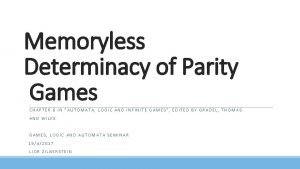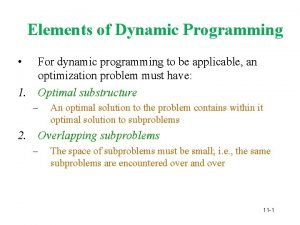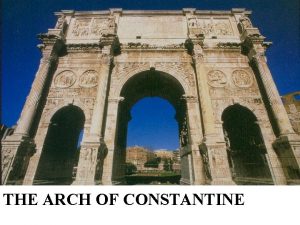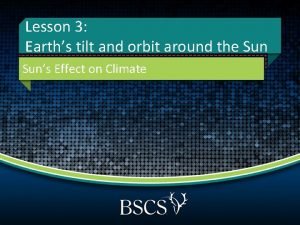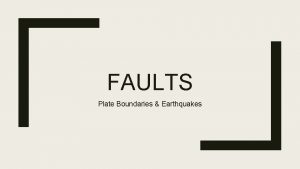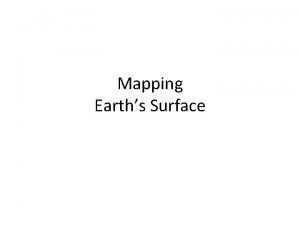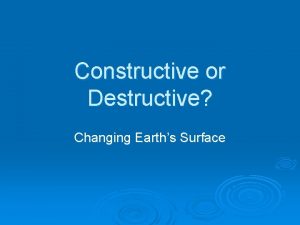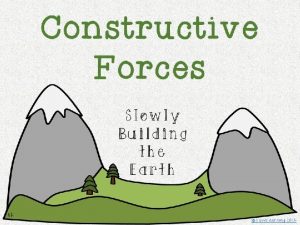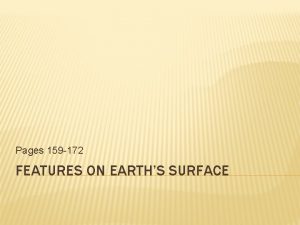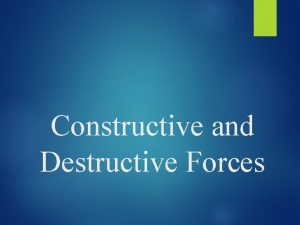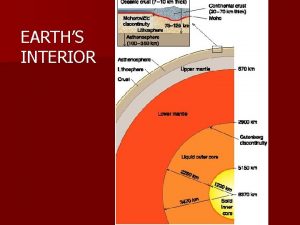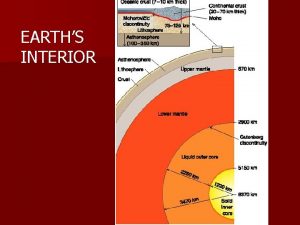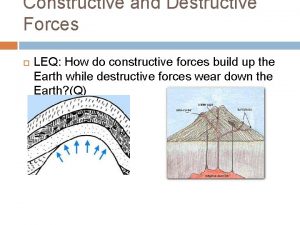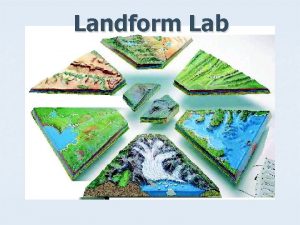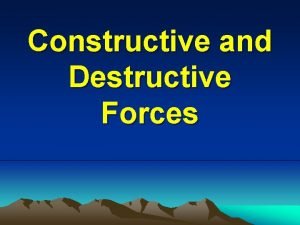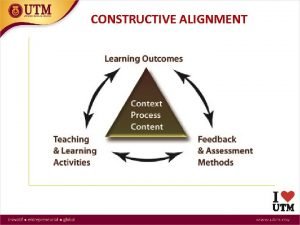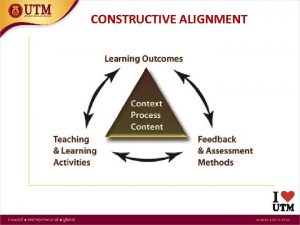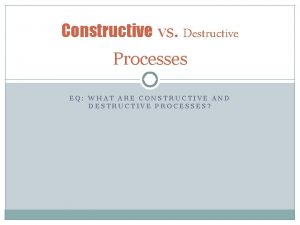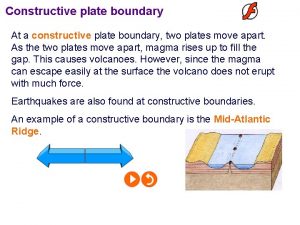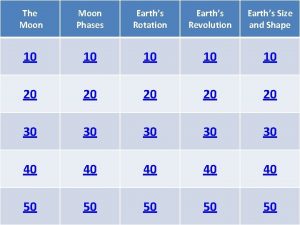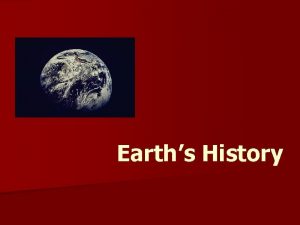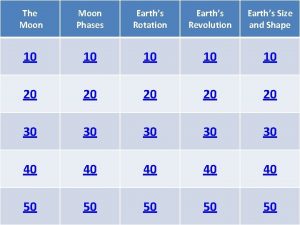Earths Dynamic Surface FEATURES ON EARTHS SURFACE CONSTRUCTIVE






























- Slides: 30

Earth’s Dynamic Surface FEATURES ON EARTH’S SURFACE

CONSTRUCTIVE FORCES � earthquakes � crustal deformations � volcanic eruptions � sediment deposition Watch

DESTRUCTIVE FORCES � Wear down landforms � carry bits and pieces of land to other places like the sea � weathering � erosion

DIVERGENT PLATE BOUNDARIES � Make new crusts � two plates moving apart in opposite directions

Alfred Wegener

Aim: How does the Theory of Plate Tectonics influence the way the Earth is today? I. Plate Tectonics A. Theory of Plate Tectonics 1. The surface of the Earth is composed of about a dozen major rigid, moving crustal plates and several smaller plates


2. Plates a. Slabs of Earth’s lithosphere (crust and upper mantle) b. Average thickness is 100 km (62 miles) c. Most plates support both continent and ocean B. Continental Drift – states that the continents have drifted and still are drifting apart.


C. Why do the plates move? 1. Due to tremendous heat, rock in the asthenosphere is like hot taffy 2. This allows plates to ride on top of hot, flowing rock. 3. Plates move because heat is being released from deep inside the earth. 4. Convection currents causes hot material to rise and expand (plates diverge) and cooler material to sink and contract (plates converge).


D. Alfred Wegener – proposed that in the distant past, the Earth’s continents were all joined as a single landmass. 1. Evidence for his theory a. South America and Africa would fit remarkably well, shoreline to shoreline. b. If the Americas were moved next to Africa and Europe, there would be a match of ancient continental rocks and tectonic (fold and fault) structures. c. Pangaea – when Wegener placed all the continents together like a puzzle, it formed a large landmass which he called Pangaea.

Fossil Evidence


SEAFLOOR SPREADING � the seafloor actually spreads apart where the plates pull away � the lava reaches earths surface then solidifies � this makes new ocean crust � The new crust forms a mid ocean ridge

LAVA COOLING UNDER OCEAN Most lava is found at divergent boundaries in the ocean

CONVERGENT PLATE BOUNDARIES � Destroy crust! � Plates converge or push into each other � deep ocean trenches � continental mountain chains � volcanic island chains

CONTINENTAL MTN. RANGE Convergent continental plates

TRANSFORM FAULT BOUNDARIES � two plates grind past each other � San Andreas Fault

THRUST FAULT � forms when compression makes a fracture form through the rock layers

� The force actually pushed one set of rock layers up and on top of the nearby rock layers

FOLD � forms when rock layers bend without breaking � the rocks actually act like silly putty in slow motion

HOT SPOTS � Rock will continually rise through the mantle and melt through the plate � As the magma rises through the crust it actually makes new rock

HAWAIIAN ISLAND IN PACIFIC OCEAN

� Formation of island chains…

LITHOSPHERE �A rigid shell � broken into piece (tectonic plates) � Its important because it proves that tectonic plates can move and the Earth is constantly changing

CONVECTION CURRENTS

CONVECTION CURRENTS…. � These currents occur in the asthenosphere (where it is hotter & can bend more easily) � they drag the plates along with them as they move

THEORY OF PLATE TECTONICS � Why is it important?

� we learn how features on Earth form � we learn to predict things to keep people safe � we know that Earth will continue to change WATC H
 Constructive proof vs non constructive
Constructive proof vs non constructive Constructive proof vs non constructive
Constructive proof vs non constructive Constructive proof vs non constructive
Constructive proof vs non constructive Rules of inference
Rules of inference Study of the earth's physical features
Study of the earth's physical features Dynamic dynamic - bloom
Dynamic dynamic - bloom Dynamic programming algorithm
Dynamic programming algorithm The earths layers foldable
The earths layers foldable Earths roation
Earths roation Whats a natural satellite
Whats a natural satellite Biome near the equator
Biome near the equator What are the families of the periodic table
What are the families of the periodic table Basalt
Basalt Whats earths moon called
Whats earths moon called Whats the thickest layer of the earth
Whats the thickest layer of the earth Earths early atmosphere contained
Earths early atmosphere contained Is lithosphere part of the crust
Is lithosphere part of the crust Earths major crustal plates
Earths major crustal plates Earths orbit seasons
Earths orbit seasons Brown earths
Brown earths Honey as fertilizer for plants
Honey as fertilizer for plants What is luna moon
What is luna moon Continental drift theory
Continental drift theory Earths crust
Earths crust Where
Where What does the earths tilt cause
What does the earths tilt cause Earth's atmosphere description
Earth's atmosphere description What's the shape of earth's orbit
What's the shape of earth's orbit Arch of constantine dimensions
Arch of constantine dimensions What does earths tilt do
What does earths tilt do Earths boundaries
Earths boundaries

